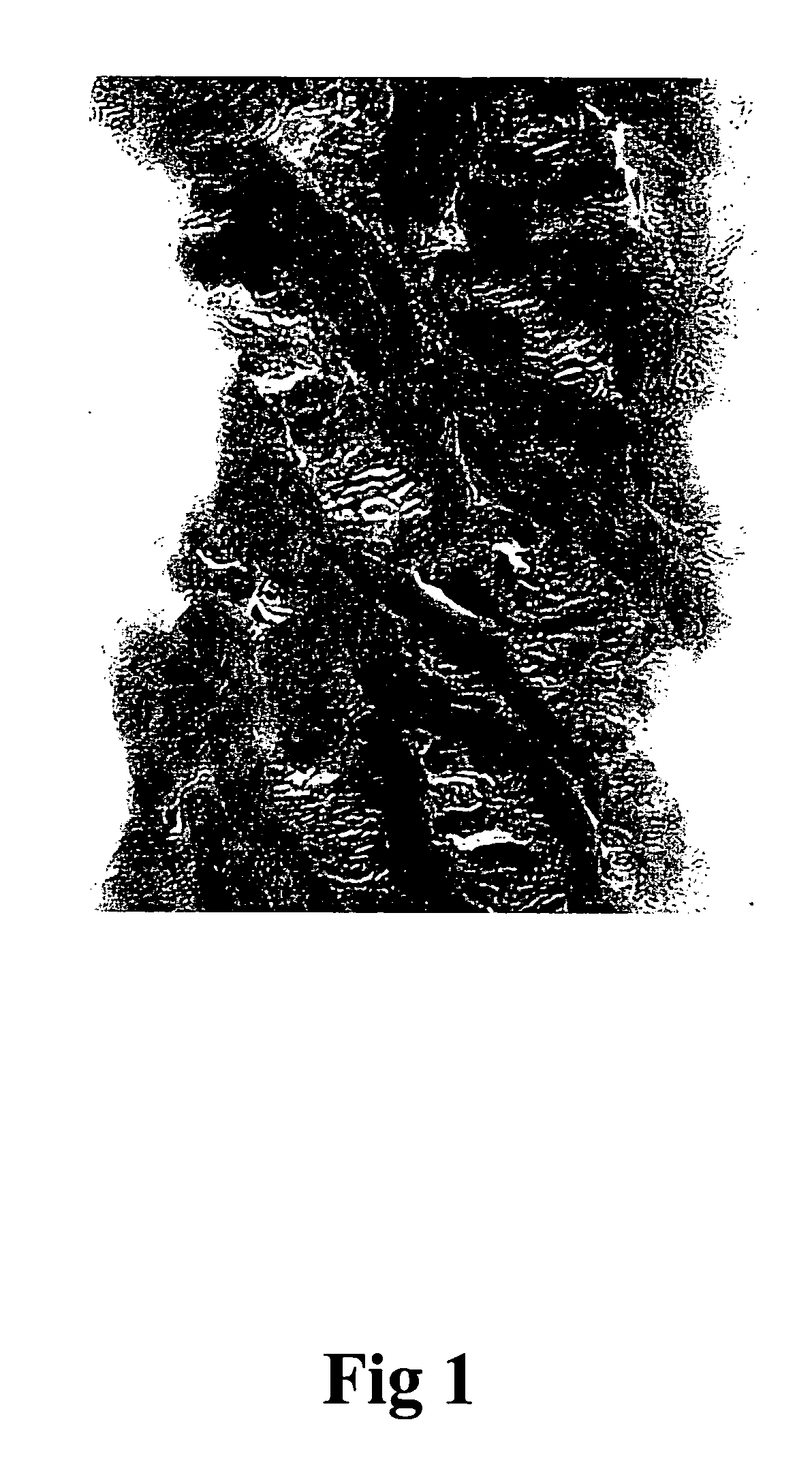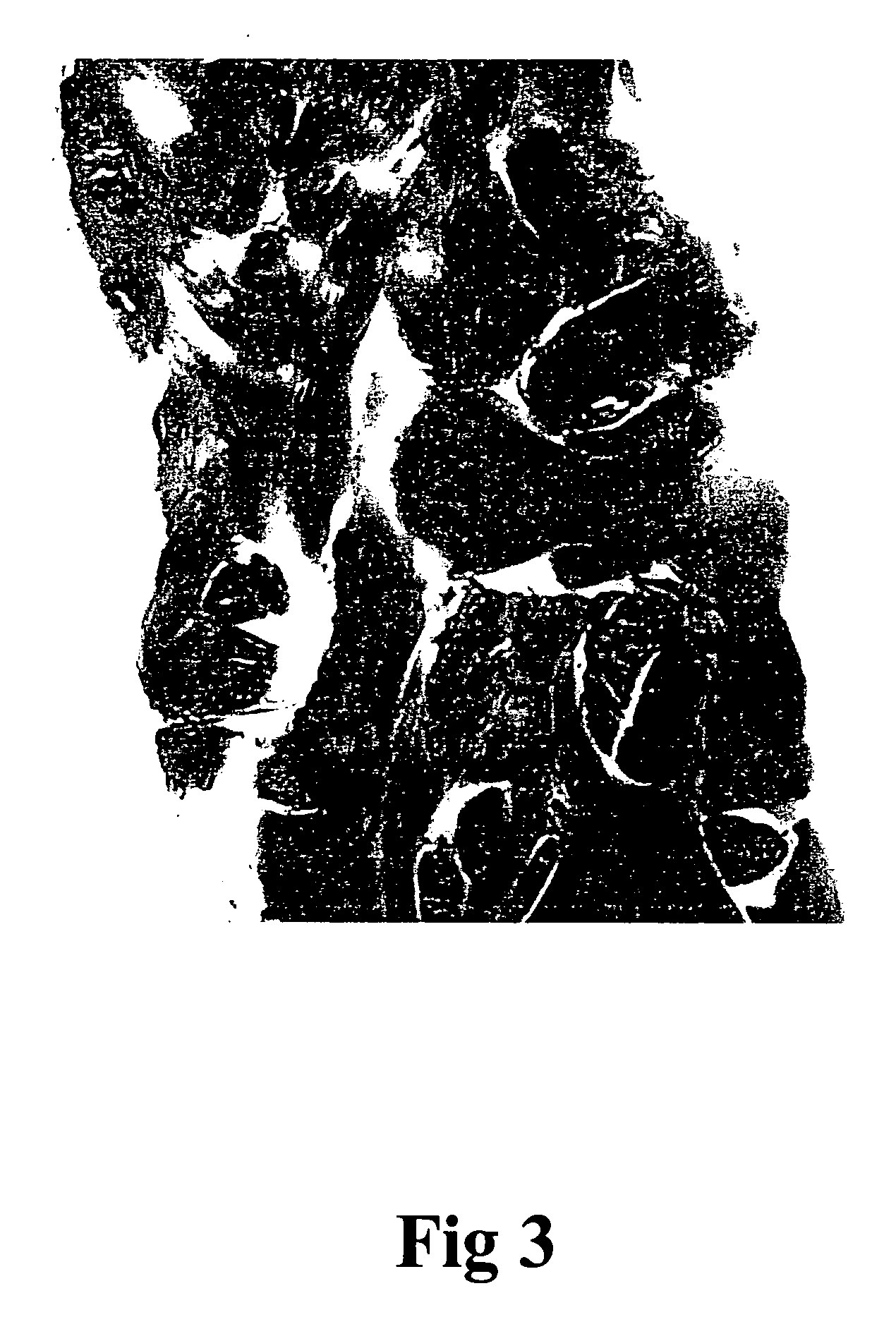Process for preparing porous collagen matrix from connective tissue
- Summary
- Abstract
- Description
- Claims
- Application Information
AI Technical Summary
Benefits of technology
Problems solved by technology
Method used
Image
Examples
example
Example 1
[0047] Lipid and fat of pigskin were removed and washed twice. Epidermis of pigskin was removed with a dermatome, and dermal tissue with thickness of 0.2 mm was selected. The dermal tissue was washed with a phosphate buffered saline solution. Solution retained on the surface of the dermal tissue was removed.
[0048] The dermal tissue was then treated with a solution of 3% hydrogen peroxide on a rotator at 37° C. for 24 hours, and then washed with a phosphate buffered saline solution. A porous collagen matrix was obtained and the cross section of the matrix was evaluated and photographed under a light microscope as shown in FIG. 1.
example 2
[0049] The pig dermal tissue was pre-treated according to the process described in Example 1, and then treated with a solution of 3% hydrogen peroxide. The dermal tissue was then washed with an aseptic phosphate buffered saline solution and frozen at −20° C. with subsequent lyophilization. A porous collagen matrix was obtained and the cross section of the matrix was evaluated and photographed under a light microscope as shown in FIG. 2.
example 3
[0050] Lipid and fat of pigskin were removed and washed twice. Epidermis of pigskin was removed with a dermatome, and dermal tissue with thickness of 0.2 mm was selected. The dermal tissue was washed with a phosphate buffered saline solution containing 0.02% NaN3. Solution retained on the surface of the dermal tissue was removed.
[0051] The dermal tissue was then treated with a solution of 0.5N hydrochloric acid on a rotator at 37° C. for 3 hours. The treated dermal tissue was then washed with an aseptic phosphate buffered saline solution so as to remove residual chemical agents. A porous collagen matrix was obtained and the cross section of the matrix was evaluated and photographed under a light microscope as shown in FIG. 3.
PUM
| Property | Measurement | Unit |
|---|---|---|
| Temperature | aaaaa | aaaaa |
| Fraction | aaaaa | aaaaa |
| Fraction | aaaaa | aaaaa |
Abstract
Description
Claims
Application Information
 Login to View More
Login to View More - R&D
- Intellectual Property
- Life Sciences
- Materials
- Tech Scout
- Unparalleled Data Quality
- Higher Quality Content
- 60% Fewer Hallucinations
Browse by: Latest US Patents, China's latest patents, Technical Efficacy Thesaurus, Application Domain, Technology Topic, Popular Technical Reports.
© 2025 PatSnap. All rights reserved.Legal|Privacy policy|Modern Slavery Act Transparency Statement|Sitemap|About US| Contact US: help@patsnap.com



